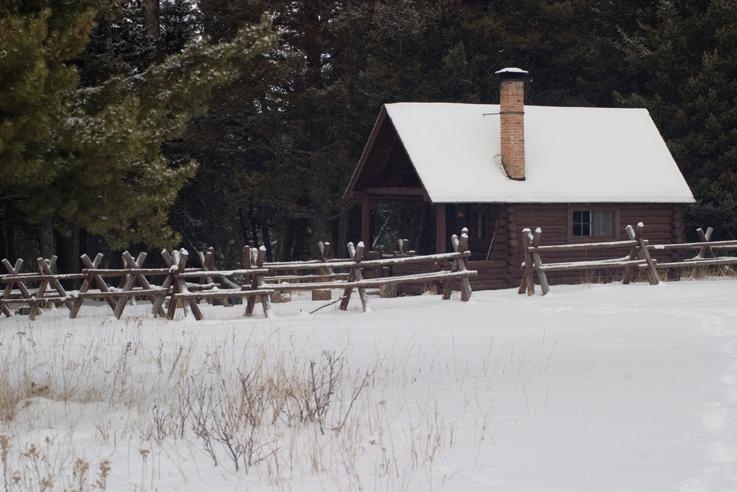Toasty Warm
Having a little place out in the woods—even if it's just four walls and a roof—can be one of life’s great pleasures. It's a place to rest, think, hide, hunt, and have fun. But it's about to get mighty cold out there, and broken pipes, roof problems, or other household repairs can become double trouble when you're miles from nowhere. Here are some things you can do to make sure your getaway cabin, fancy or not, stays functional for winter use.
Cabins in Remote Areas
Getaway cabins in remote, “off the grid” areas are usually primitive, rustic structures. They typically don’t have electricity or indoor plumbing and rely on wood stoves for heat and cooking.
Check the Chimney
When “opening your cabin” after having been gone, check to make sure the chimney is clear before starting a fire in your wood stove or cook stove. Sometimes debris can accumulate inside a chimney due to squirrel or other critter traffic.
Wood Is Good
If you’re going to leave your cabin and possibly not be back before winter weather hits, make sure to have plenty of firewood stocked up. Also, make sure to secure the doors and windows, and shut the woodstove’s damper and other openings. You can store nonperishable foods in air-tight/critter-tight containers, but take canned goods with you when you leave.
Keep out the Crazies
While you’re gone, it is pretty difficult to close a cabin well enough to stop someone who is determined to break in, no matter how well you’ve fortified it. That being said, if you’re serious about keeping people out, your best bet is to secure your windows and doors with steel security shutters or gates. Roll-down security gates, like those commonly used in storage units, also do a decent job. And with any of these, hasps and padlocks should also be used.
Generally speaking, if your cabin is “off the grid,” remote monitoring systems are not an option because they require electricity as well as phone service. However, there are some relatively inexpensive systems available that use a small solar panel and battery to power a limited “siren only” alarm kit. Motion-activated game cameras can also be used to capture and store images of anyone who does break in. Both of these are sensible, inexpensive options for do-it-yourselfers.
Retreats with Amenities
In recent years there’s been an explosion in the number of vacation homes in many areas popular for recreation. If you own one of these “on-the-grid” retreats with the standard amenities, you’ll also want to give some thought to how you can get ready for winter.
Drain the Water and Bust out the Antifreeze
During the winter, unoccupied vacation homes can be especially vulnerable to problems with home heating and plumbing systems. Because of this, some owners simply turn off the main water supply valve to prevent the possibility of flooding while they’re gone. But this still leaves the plumbing and plumbing fixtures vulnerable to freezing temperatures and damage should the home heating system fail.
The most economical and energy-efficient solution is to winterize your home when you leave for extended periods during the winter. Winterizing requires that the main water supply valve be shut off before draining all the water lines, water heater, clothes washers, dishwashers and any other appliances that use or hold water. Even supply hoses and drains to each appliance should be drained. Toilet tanks, sump pumps, and flexible drain hoses in sinks and showers should be drained as well. At least one cup of RV antifreeze should be used in each drain trap for the toilets, sinks, bathtubs, showers, etc. Sprinkler systems should be blown out and garden hoses should also be disconnected from valves on the exterior of the house.
Big Brother Yourself
However, if your home will be used frequently though the winter, winterizing after each use of the home may prove to be a burden. You may want to consider having an electronic monitoring system installed to avoid the hassle of repeated winterization while detecting problems within your home quickly after they occur, before significant damage can occur. Such systems require electricity and active phone connections (landline or wireless) and are capable of monitoring for a variety of hazards or intruders. All electronics and appliances should be unplugged in case of a lightning strike.
Other Stuff to Remember
No matter what type of getaway you’ve got, make sure to keep a fire extinguisher and a first-aid kit on-hand for emergencies. Leaves, pine needles, and other dead and dry vegetation that could be combustible should be cleared from the area within at least 30 feet of your home.







